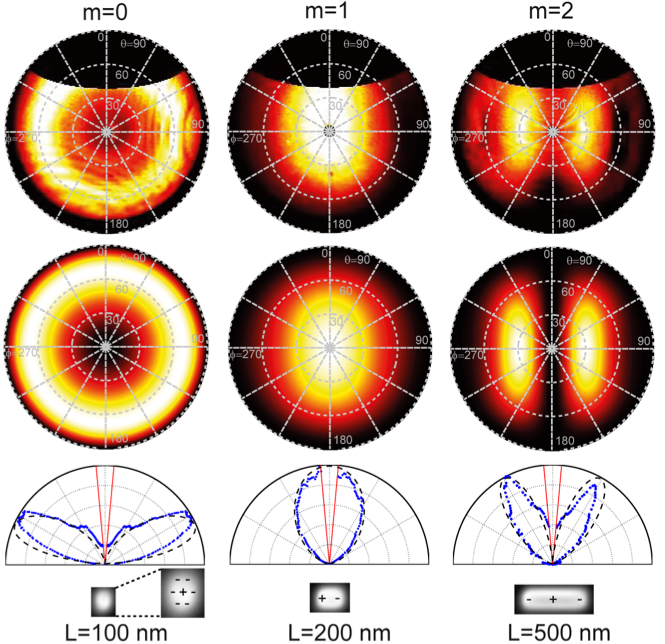Various materials can be used in plasmonics, such as aluminium, gold, gallium, and others. One of the main advantages of plasmonic materials is their ability to enhance and direct emission, therefore, they can be successfully used for nanoantennas, sensing and local heating.
Since plasmonic structures operate on such a small scale, it is quite challenging to observe their optical properties. One way to do that is by measuring light, which is generated when an electron beam hits the specimen. This allows to study materials at the length-scales that are much smaller than the diffraction limit of light. The most powerful technique that can be used for such studies is called cathodoluminescence. Cathodoluminescence microscopy is a valuable technique which allows to explore many fundamental properties of matter. Among possible applications are studying light transport, scattering, electronic structure of a material (e.g. bandgap, defects), resonant phenomena and much more.
There are multiple different examples on how cathodoluminescence can be used to observe and study plasmonic structures. One of the most common applications is studying particles in a wide range of geometries, sizes and materials, including coupled plasmonic systems such as metamolecules. Another way to use cathodoluminescence is to study plasmon propagation. By scanning the electron beam away from the scattering objects (such as grating), one can quantitatively determine the plasmon propagation length. Cathodoluminescence emission can also be successfully used to study plasmonic antennas and probe their directionality. One way to do it is with angle-resolved measurements: by looking at the angular profiles of the antennas one can conclude in which particular direction the antennas systems radiate, therefore, understand in which direction the energy emission is received. Analysing CL intensity for different patch diameters, wavelengths and e-beam positions allows to understand how the antenna will behave with various point sources, and therefore to model the performance of the antenna system.
The most recent publications show that cathodoluminescence is a very powerful technique for studying the optical properties of plasmonic nanostructures. It can be used for electron driven light sources and for studying coupling to (single) emitters.
If you would like to learn even more about the possibilities of cathodoluminescence for studying plasmonic structures, please watch the webinar below.
.png)







